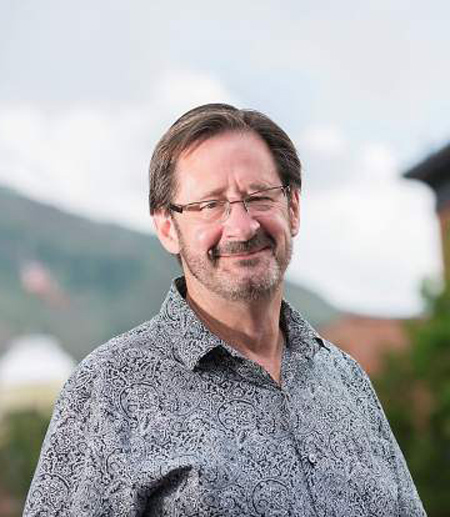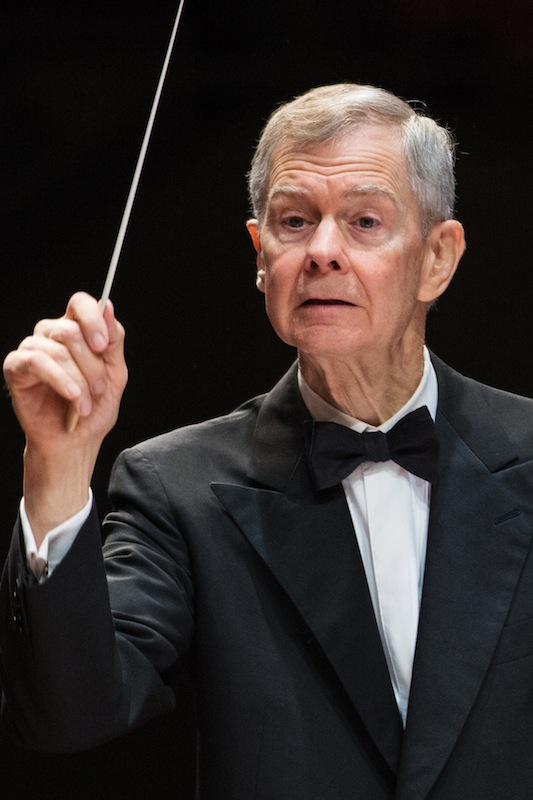New England Philharmonic provides superb advocacy for Stucky Symphony
For Steven Stucky, the genre of the symphony was both inspiring and intimidating. Though he composed actively in the medium in his youth—completing three symphonies as a young man and another for his doctoral thesis—he left those early works off his official oeuvre list, preferring to have them linger in obscurity.
But Stucky, who died in 2016 from brain cancer, was a composer who kept an eye towards tradition. So it was perhaps inevitable that he would return to the symphony later in his creative life in order to put his own stamp upon musical history.
In 2012, he completed his Symphony, a joint commission from the Los Angeles and New York Philharmonics, who respectively offered the premiere and first East Coast performances. It has since fallen off the radar for many conductors.
Fortunately, Richard Pittman and the New England Philharmonic are bringing new attention to the work. Saturday night at the Tsai Performance Center, as part of an eclectic program, the orchestra offered Stucky’s Symphony in its belated Boston premiere.
Cast in four movements played without pause, Stucky’s Symphony is a crystalline example of formal logic and searching musical craftsmanship. Having turned to single movement structures in 2007, Stucky employs a Sibelian level of technique with this work. Themes introduced in the opening recur throughout, slightly transformed, to draw listeners into the process. The Symphony is also remarkable for its concision—in all, it lasts less than 20 minutes.
Harmonically, Stucky is as adventurous as Witold Lutoslawski, a composer with whom he had a close connection. Chords sting with dissonance and textures glide smoothly from chattering figures to serene passages.
Yet there is a touch of lyricism to Stucky’s style. One of the most beautiful episodes in the Symphony is a glowing chord pattern—a kind of hymn played by the French horns. In that passage, the musicians of the New England Philharmonic found radiant warmth.
In fact, the orchestra as a whole had a stellar evening with this work. Stucky’s movements flowed together smoothly, though Pittman took care to draw attention to the fluent oboe and flute solos that pepper the work’s opening. The conductor, too, found the crushing pathos of the second movement, with some brass figures erupting in powerful statements. The Scherzo moved with urgency, and the final movement brought the work to a glowing resolution.
Stucky taught a number of students who have become successful composers in their own right. One of them is Eric Nathan, whose Paestum received its world premiere in its orchestral version Saturday night.
Like Stucky, Nathan’s music moves with bracing intensity and impeccable logic. Gestures associated with experimental techniques—such as glassy string harmonics and percussive string figures—flow with forward momentum within a sturdy framework.
Paestum was inspired by Greek ruins in a small Italian town. But rather than capture literal images through music, the nine-minute work conjures the excitement and electricity one feels when encountering ancient architecture.
It unfolds through stabbing string figures and bold brass chords, which together create a bristly texture. As the music slows down, Nathan’s short melodic statements extend into long lines that hang in space like light through a church window. Low brass supply depth and power in the outer sections. Pittman and the New England Philharmonic gave Nathan’s music bold advocacy through a nimble, precise performance.
The solo spotlight of the evening fell upon pianist Jeffrey Swann, who delivered a glittering rendition of a real curio, Busoni’s Indian Fantasy for piano and orchestra.
After reading about Native Americans, Busoni became intensely curious about the peoples’ music and culture. A handful of his works, including this one, incorporate Native American themes.
Swann has made the Indian Fantasy a personal calling card through numerous performances in Europe and elsewhere. The 26-minute piece bears the mark of Liszt, and Swann handled the work’s dazzling runs and knuckle-busting passages with crispness. But there was also a world-weary sense of melancholy to Swann’s reading. Lines were shaped in singing arcs and tempos remained deliberate until the final, whip-crack section.
The slow theme was particularly gorgeous as Swann rendered it with hymn-like solemnity. The orchestra supplied a similarly sensitive accompaniment, with strings wrapping Swann in dark textures.
The orchestra sounded equally splendid in the Three Dance Variations from Bernstein’s Fancy Free. Whether through the biting sarcasm of the Galop, the swaying phrases of the off-kilter Waltz, or the zesty rhythms of the Danzon, the New England Philharmonic provided some of its best playing in recent seasons. Only a few unfortunate cracks in the trumpet solos marred an otherwise fine performance.
Debussy’s Prelude to the Afternoon of a Faun, the concert’s opener, was especially colorful. Phrases unfolded in soft textures through Pittman’s elegant and generous rubato shading. The orchestra responded beautifully to his lead, with solo flute adding both bright and velvety shades.
The next concert of the New England Philharmonic will feature music by Rakowski, Currier, Hoffer, and Ravel 8 p.m. April 28 at the Tsai Performance Center. nephilharmonic.org
Posted in Performances






